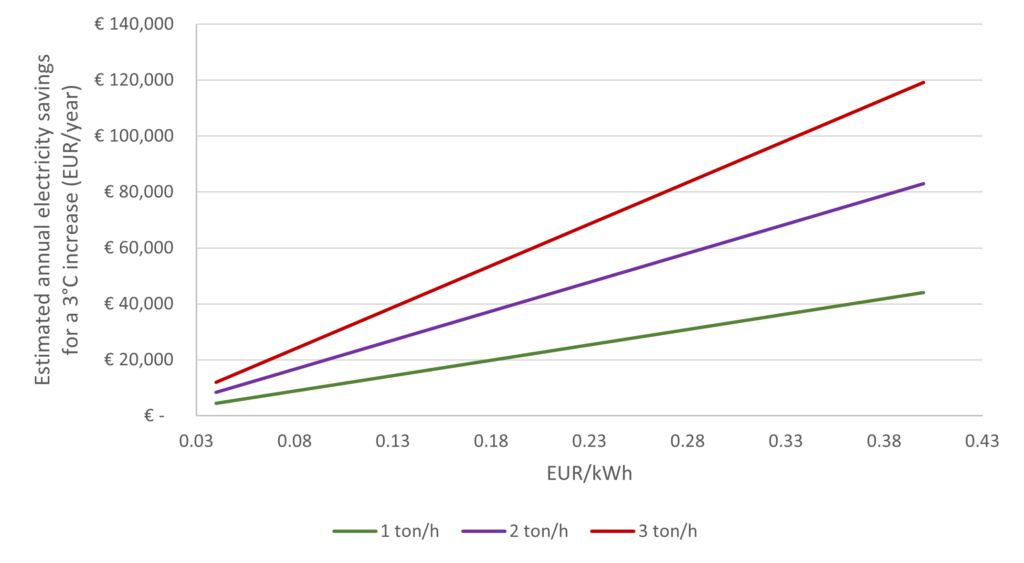Bouncing back from Covid-19 and the recent geopolitical developments, the energy prices are peaking. Since the energy prices are a major cost in the freezing step of frozen food production, monitoring & controlling the freezing processes is key. With measuring the freezing quality of the products inline, the CALLIFREEZE® & MICROFREEZE® sensors keep measuring in-line what your optimum should be.
It is quite common to find industrial freezers excessively freezing the products. In-line testing showed that the evaporation temperature can be easily increased with 3°C. Larger increases in evaporation temperature are possible but are product dependent. Considering that a 1°C increase of the freezer corresponds to a 3% savings in electricity, the total electricity costs can be reduced with 9%.
Take for example a 20 ton French fries production line. For the production of French fries, the MICROFREEZE® sensor is installed after the tunnel freezers. For a 9% reduction in electricity cost, the potential savings for different production capacities are shown in Figure 1. These estimations are based on a production running 24/7, 300 days a year. Since the average energy prices reach 0.30 EUR/kWh early 2022 in different European countries, the savings reach 140 000 Euro per year for a 20 ton/h line. 1%.

Products like hamburgers, poultry or fish are often frozen via spiral freezers. In this case, the CALLIFREEZE® is used to analyze the freezing quality of the individual products. Similar to the previous situation, the freezing temperature of the spiral freezer can be easily increased with several degrees. Similar to the previous situation, a 9-10% reduction in electricity costs can be achieved. Figure 2 shows the potential savings for poultry products in a spiral freezer.

With an average price of 0.30 EUR/kWh, the potential savings reach 90 000 Euro per year for a 3 ton/h spiral freezer. The estimated savings for other products such as beef and fish are comparable. With rising energy prices and non-recoverable taxes e.g., CO2-taxes, optimizing the freezing processes will be a critical parameter in production cost. Leaving the savings in payroll-cost aside.
Conclusion
The CALLIFREEZE® & MICROFREEZE® sensors help you analyze the freezing quality inline as they indicate how to optimize the process. This translates to an average energy cost reduction of average 9% while maintaining the optimal freezing quality. The Aquantis freezing sensors are very useful with various products including French fries, poultry, fish, and many more. With the rising energy prices and taxes, controlling the freezing process as well the process cost is essential to keep your competitive advantage.